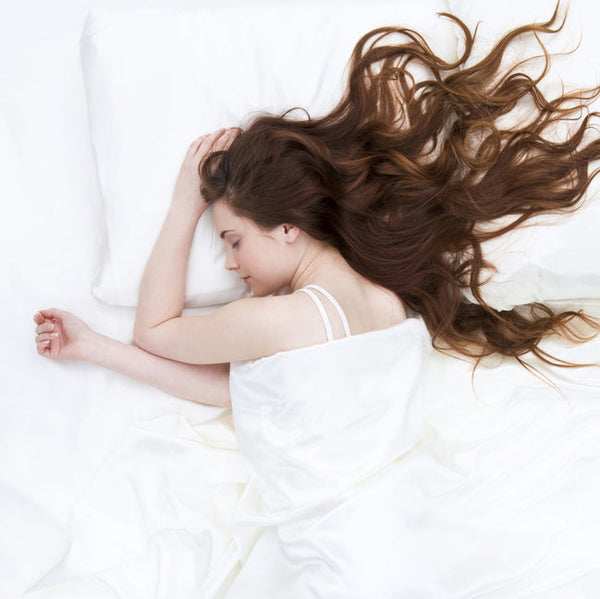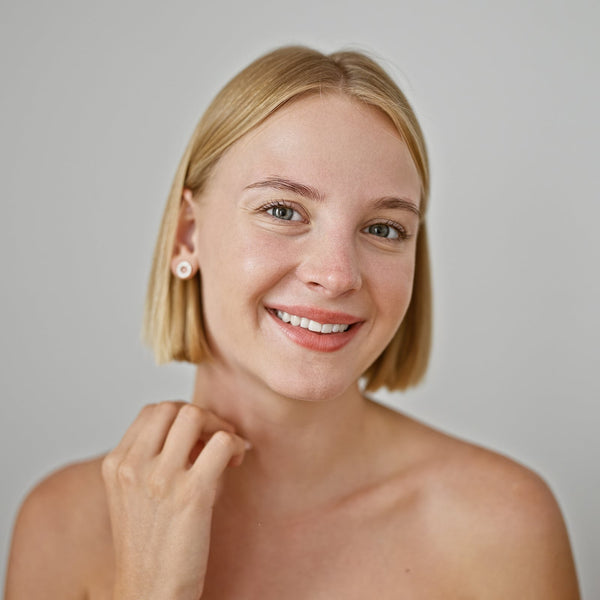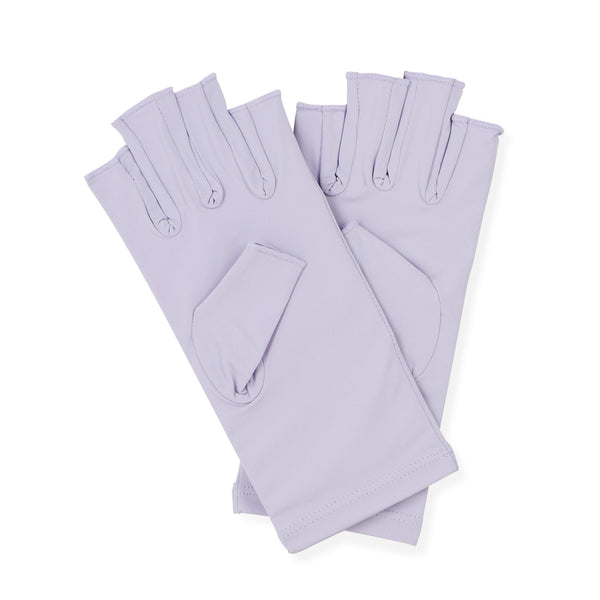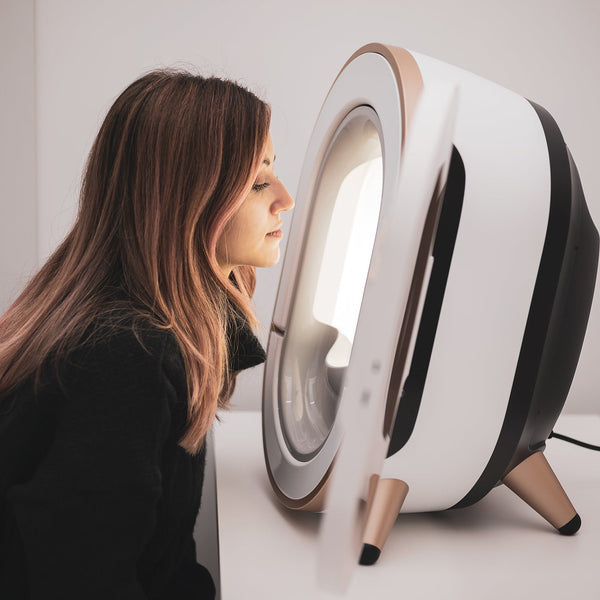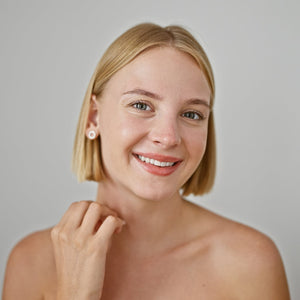Understanding Rosacea, and creating a treatment plan for your aesthetic clients

As an aesthetician, I see a multitude of different clients with varying skin types, but my rosacea clients get the gentlest treatment. This skin condition can manifest in different forms and be different from one client to the other. According to the National Rosacea Society, over 16 million Americans are affected by the skin disorder, and as many as 415 million worldwide according to new research in the British Journal of Dermatology. Despite being a relatively common skin condition, only 18 percent of Americans with rosacea are currently receiving medical treatment for their condition, and some don’t realize rosacea can be treated by over the counter and prescription products.
As an aesthetician, what is your plan of action for a sensitive rosacea client? Do you recognize rosacea right away during the skin consultation?
Rosacea is a common chronic inflammatory skin disease that almost exclusively affects the central facial skin and rarely affects the skin of the neck and the forehead. The word “rosacea” derives from the Greek word meaning “rose-like,” which describes the main symptomatology of repeated flushing alone or in combination with transient or persistent erythema (reddening of the skin). Clinically, rosacea is characterized by persistent erythema, telangiectasia (spider veins), papules, pustules, and thickened skin with enlarged pores and irregular surface nodularity. These symptoms are often accompanied by burning, stinging, or even migraine-like pain, as well as ocular pain.
Triggers of rosacea may include hot or cold temperature, direct sunlight, wind, hot drinks, exercise, spicy food, alcohol, emotions, cosmetics, topical irritants, menopausal /hormonal flushing, and medications that promote redness. Some research has also shown a possible link between rosacea and the common bacteria Helicobacter pylori (H. pylori). This is the same bacteria that causes gastrointestinal infections. According to the National Rosacea Society, H. pylori may raise levels of the hormone gastrin, which regulates acid production in the stomach and could contribute to the flushing seen in rosacea. In a recent study, the eradication of H. pylori infection led to a significant improvement of skin symptoms in rosacea patients.
Another likely culprit is the Demodex mite – a natural part of our microbiome. Two species of Demodex are found in humans. Demodex folliculorum that live in hair follicles, primarily on the face, as well as in the meibomian glands of the eyelids, and Demodex brevis that live in the sebaceous glands of the skin. According to the National Rosacea Society, while Demodex folliculorum are found on the skin of all humans, they more frequently occur in greater numbers in those with rosacea - evidence appears to be mounting that an overabundance of Demodex may possibly trigger an immune response in people with rosacea, or that the inflammation may be caused by certain bacteria associated with these mites. They are most often found on the cheeks, nose, chin and forehead — and that large quantities of mites have been found in biopsies of rosacea papules and pustules.
Most rosacea sufferers tend to be fair skinned, from Celtic or Scandinavian ancestry,
and often have blonde hair and blue eyes. They are also likely to have someone in their family tree with rosacea, severe acne, or acne cysts and nodules. However, in the 1993-2010 US National Ambulatory Medical Care Survey on the racial/ethnic distribution of patients with rosacea, it was estimated that rosacea affected 2% of Black individuals, 2.3% of Asian or Pacific Islanders, and 3.9% of Hispanic or Latino individuals of any race. Oftentimes, rosacea is underdiagnosed among patients with skin of color because of the difficulty of discerning erythema and telangiectasia. While the symptoms are similar across all Fitzpatrick skin types, the erythema and telangiectasia are more difficult to visualize on darker phototypes.
For patients with darker phototypes it’s recommended to blanch the skin to help identify erythema. A test for blanch-ability is called Diascopy and is performed by applying pressure with a finger or glass slide and observing color changes on the skin. A piece of clear glass or plastic is pressed against the skin while the skin care professional looks directly at the lesion under pressure. It is used to determine whether a lesion is vascular, nonvascular, or hemorrhagic. Hemorrhagic lesions and nonvascular lesions do not blanch; inflammatory lesions do. Upon identifying rosacea, the treatment protocol for patients with darker Fitzpatrick phototypes is the same as those with lighter phototypes. Finacea or Azelex 15% gel or foam may be prescribed by a dermatologist to reduce redness, pustules and papules. The main ingredient in these prescription topicals is Azelaic acid - it works to treat rosacea by decreasing the swelling and redness of the skin. Azelaic acid treats acne by killing the bacteria that infects pores and by decreasing production of keratin. One study evaluated oral sub antimicrobial-dose doxycycline and found similar efficacy and safety between patients with Fitzpatrick skin types I through III and IV through VI.
Women are more prone to have rosacea, but men are more likely to have a severe form of it. A worldwide expert panel on rosacea has identified its our subtypes. The subtypes can range from mild to severe, and commonly, individuals tend to have more than one subtype. There are four rosacea subtypes: erythematotelangiectatic, papulopustular, phymatous, and ocular.
Erythematotelangiectatic rosacea
Erythematotelangiectatic rosacea (ETR), is associated with persistent facial redness, flushing, and visible blood vessels. Without treatment, the erythema can get more persistent, cover more skin, and even become permanent. The symptoms typically include swollen, sensitive, burning, tingling, dry and scaly skin. Individuals with this condition may also feel warmth in the affected area. ETR is the most common type of rosacea.
Papulopustular rosacea
Papulopustular (acne) rosacea, is associated with acne-like breakouts, and often affects middle-aged women. Papulopustular rosacea most often causes very large, painful papules and pustules that develop deep into the central face skin. The characteristics of this type or rosacea are oily skin, raised blemishes, and broken capillaries. It is often seen in combination with ETR.
Phymatous rosacea
This subtype is associated with skin thickening and enlargement – usually around the nose (rhinophyma). Rhinophyma is classified as part of subtype 3 rosacea, and usually occurs in men with a ratio of men to women ranging from 12:1 to 30:1. 21% of men with rosacea will develop rhinophyma, compared to only 8% of women. It forms gradually over several years and is believed to be the result of untreated rosacea. Most commonly it is seen in the fifth to seventh decades of life and is primarily seen in Caucasians with few reported cases in Asian and African populations. The outcome is usually a large bulbous mass on the lower half of the nose. There is hypertrophy of sebaceous glands and connective tissue, and it is thought to represent the end stage of severe rosacea.
While treatment of other rosacea subtypes with azelaic acid, metronidazole, retinoids, antibiotics, and other topical medicines can be quite effective, there have been no regimens successful in preventing development of rhinophyma or definite treatment of rhinophyma. Oral isotretinoin has been shown to decrease nasal volume in rhinophyma that is sebaceous in type in the profibrotic stage, (when used early in the course of the disease) and in younger patients. This is likely related to its ability to reduce sebaceous gland size and number. Currently, laser and surgery is the only effective treatment for extensive rhinophyma. Surgical options available include laser therapy, dermabrasion, excision with grafting, wire loop excision, and Shaw scalpel resection with electrocauterization.
Laser therapy is the gold standard in treating rhinophyma. It is most often performed with a fractionated CO2 laser and takes as little as 15-60 minutes depending on the severity of the case. The CO2 is an ablative laser that works by targeting intracellular water resulting in cell vaporization and tissue destruction. The initial treatment consists of vaporizing excessive tissue growth on the nose. In some patients who may require additional treatments, the second ablation should be scheduled 12 weeks after the initial one, and a final one 4 weeks after that. A total of two to three treatments have been shown to produce excellent results.
Dermabrasion is another option, it can be performed by an M.D. with a rotating file held perpendicular to the skin surface and followed by dermaplaning, debulking, and a YAG laser.
A simple surgical excision using a Shaw scalpel to shave off the abnormal tissue with electrocauterization of the bleeding points can also be considered as a good treatment option for rhinophyma, as well. Debulking in layers with scissors is a safer alternative than a scalpel, but the CO2 laser seems to be the modern treatment of choice.
Excision with grafting is a very serious surgical procedure that aims at reducing rhinophyma recurrence by completely removing the afflicted tissue and replacing it with a graft from another part of the face, likely the forehead.
The techniques to treat rhinophyma vary in success, but all aim to debulk the overgrowth of tissue and produce normal nose contour with minimal scarring, distortion, and pigmentary change. A combination of surgical and non-surgical approaches may be used for the best aesthetic result. There is currently no cure for rhinophyma, and the symptoms can return after surgery.
Ocular rosacea
Some individuals may only exhibit rosacea in the eyes, or in conjunction with the other subtypes. The symptoms of ocular rosacea are swollen, red eyelids, bloodshot eyes, conjunctivitis (pink eye), crusty eyelids or eyelashes, itching and burning. It’s unknown exactly why it happens, but research has found that 85% of people with ocular rosacea have blocked oil glands around the edges of their eyelids. Demodex folliculorum may also be responsible for it since this mite lives in the eyelashes. Topical treatment includes warm compress and cyclosporine, as well as oral antibiotics such a tetracycline, doxycycline, erythromycin or minocycline.
As aestheticians, we are able to provide healing and calming treatments within our scope of practice to those clients suffering with the first two subtypes of rosacea – ETR and papulopustular rosacea. I believe in treating my sensitive rosacea clients according to the principles of corneotherapy – a remedial skin treatment methodology with its core principle being the repair and maintenance of the skin barrier defense systems. The stratum corneum and the lipid barrier that keeps it intact both play a significant role in skin health. Protecting the fragile and sensitive skin of the rosacea client from microorganisms and harmful substances that degrade the barrier is the safest option for treatment in the professional setting, as well as at home.
An aesthetic treatment can consist of a gentle cleanse with a milky hydrating cleanser, followed by a light enzymatic exfoliation. The enzymes cannot be activated by steam, as heat causes further erythema and irritation; I recommend using a lukewarm towel over an activated clay enzyme for ten minutes, and avoiding scrubs, acids or extractions. Facial massage is contraindicated, since it may break capillaries and spread acne bacteria in papulopustular rosacea. You may substitute this for a cranial massage while the client is enjoying the enzymatic exfoliation.
A healing hyaluronic acid mask works wonderfully for ETR, while a clarifying zinc and camphor mask helps heal acne rosacea. Leave-on products should be nourishing and hydrating, such as a hyaluronic acid serum, crème, and a squalene oil. As with all my clients, the most important stem of the facial is SPF – a good natural sunscreen based on Zinc and Titanium dioxide. The daily routine must not include any products with alcohol, overbearing fragrances, irritants or strong surfactants. Gentle products and regular treatments can greatly reduce the psychological trauma and physical discomfort associated with the condition. Clients must also be reminded to avoid triggers such as spicy foods, hot showers, alcohol and picking their face.


